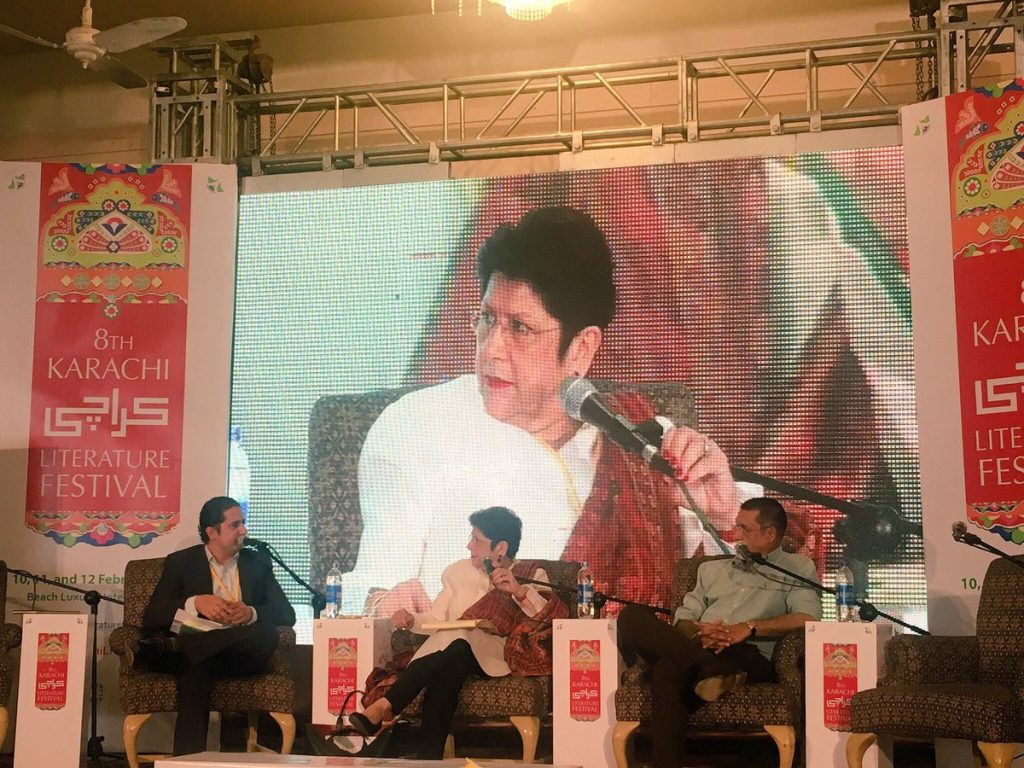Sadequain and the Culture of Enlightenment
The death of Dr Akbar Naqvi late last year caused dismay in the art world in Pakistan – there has been no other art critic or art historian of his stature in the country. His most recent book on Sadequain was the subject of discussion at the Karachi Literature Festival. Moderating the session was author and critic Sibtain Naqvi who was joined on the panel by cultural anthropologist and curator of the Mohatta Palace, Nasreen Askari and the brains behind Framed an 18-episode series on Pakistani Art, Saquib Hanif.
Hanif talked about how the book depicts the many facets of Sadequain’s art as well as his personality. For example, he was the “quasi-official artist of Pakistan” even during a dictatorship. Hanif said that it was not simply his art that was part of his brand but his entire persona. He was a man who not only boasted of dichotomy but personified it as well. Dr. Naqvi’s work traced Sadequain’s journey in coming to command the influence that he enjoyed, and in that he was comparable to the legends of the Renaissance; Michelangelo and da Vinci.
Askari also touched on the dichotomy that shaped Sadequain’s personality and some stories of the artist’s famed arrogance and ego were shared. She was also keen to re-establish Sadequain as the “holy sinner” – a title that this particular book refutes. Instead, Dr Naqvi places him within the Sufi Malamati tradition. Hanif then recalled that while painting a government commissioned work, General Zia ul Haq, the dictator at the time, would send the artist cases of scotch as he worked.
When an audience member asked Hanif who he thought gave the painter permission to act the way he did, Hanif replied that Sadequain had reached a level of mastery where the only person who permitted or forbade him anything was himself.
Unfortunately, the subcontinental tradition of enlightenment, within which the book placed Sadequain and his peers and which is a recurring theme throughout, was not touched upon at all.




